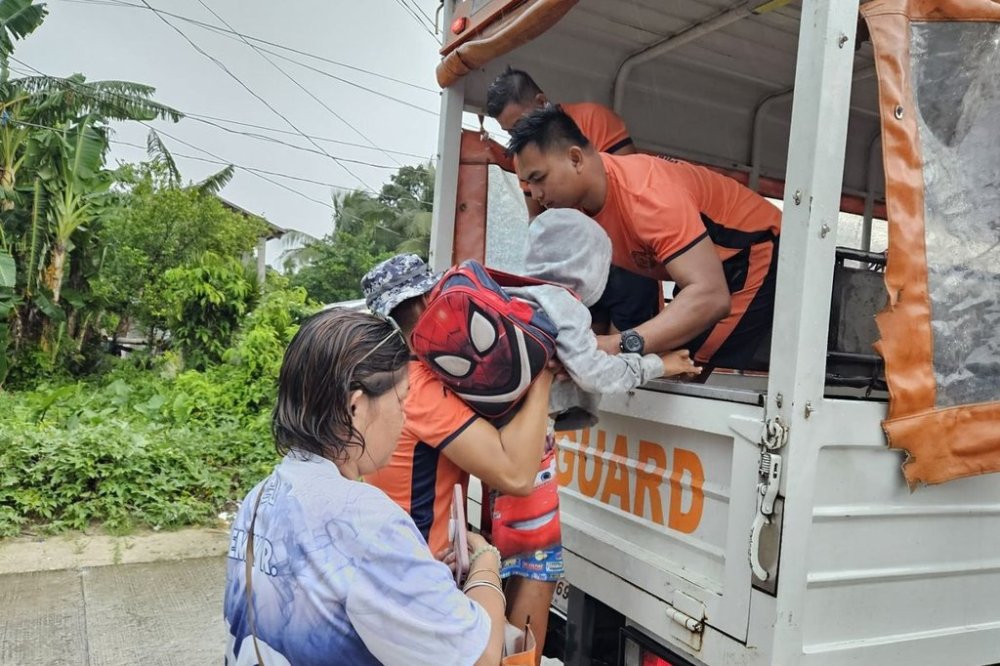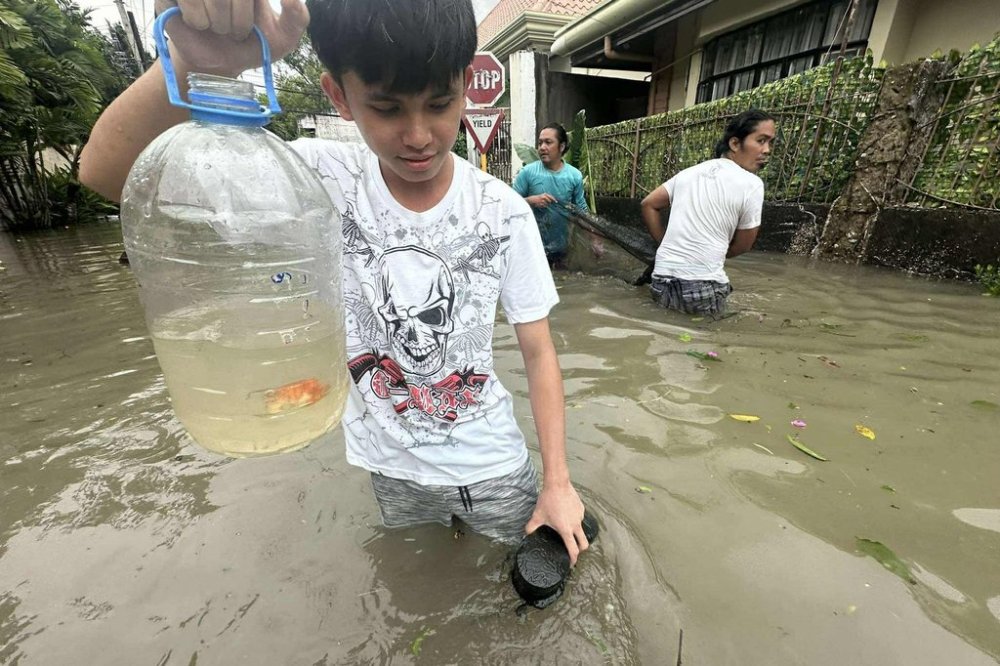Typhoon Kalmaegi moves across central Philippines, leaving at least 1 dead and setting off floods
Advertisement
Read this article for free:
or
Already have an account? Log in here »
To continue reading, please subscribe:
Monthly Digital Subscription
$0 for the first 4 weeks*
- Enjoy unlimited reading on winnipegfreepress.com
- Read the E-Edition, our digital replica newspaper
- Access News Break, our award-winning app
- Play interactive puzzles
*No charge for 4 weeks then price increases to the regular rate of $19.00 plus GST every four weeks. Offer available to new and qualified returning subscribers only. Cancel any time.
Monthly Digital Subscription
$4.75/week*
- Enjoy unlimited reading on winnipegfreepress.com
- Read the E-Edition, our digital replica newspaper
- Access News Break, our award-winning app
- Play interactive puzzles
*Billed as $19 plus GST every four weeks. Cancel any time.
To continue reading, please subscribe:
Add Free Press access to your Brandon Sun subscription for only an additional
$1 for the first 4 weeks*
*Your next subscription payment will increase by $1.00 and you will be charged $16.99 plus GST for four weeks. After four weeks, your payment will increase to $23.99 plus GST every four weeks.
Read unlimited articles for free today:
or
Already have an account? Log in here »
MANILA, Philippines (AP) — A fast-moving typhoon barreled across the central Philippines Monday after slamming ashore overnight from the Pacific, leaving at least one person dead, causing flooding and power outages and displacing tens of thousands of people, officials said.
Typhoon Kalmaegi was blowing over the city of Sagay in central Negros Occidental province mid-morning with sustained winds of up to 150 kilometers (93 miles) per hour and gusts up to 185 kph (115 mph) after making landfall around midnight in the town of Silago town in the eastern province of Southern Leyte.
Kalmaegi, the 20th tropical cyclone to batter the Philippines this year, was moving northwestward at 25 kph (16 mph) and was forecast to start shifting away from the western section of the archipelago into the South China Sea later Tuesday.

An elderly villager drowned in floodwaters in Southern Leyte, where a provincewide power outage was also reported, officials said in an initial report without providing other details.
Ahead of the typhoon’s landfall, disaster-response officials said more than 150,000 people had evacuated to safer ground in eastern Philippine provinces. Authorities warned of torrential rains, potentially destructive winds and storm surges of up to 3 meters (nearly 10 feet).
The typhoon, which has a broad wind band spanning about 600 kilometers (373 miles), was expected to batter central island provinces, including Cebu, which is still recovering from a 6.9-magnitude earthquake on Sept. 30 that left at least 79 people dead and displaced thousands when houses collapsed or were severely damaged.
On central Negros island, villagers were warned that heavy rains could cause volcanic mudflows on Kanlaon volcano, which has been emitting plumes of ash and steam in recent months, according to the Philippine Institute of Volcanology and Seismology.
In Eastern Samar, one of east-central provinces first lashed by Kalmaegi, Gov. RV Evardone ordered mandatory evacuations and said residents readily moved to safety.

Typhoon Haiyan, one of the most powerful tropical cyclones on record, slammed ashore into Guiuan town in Eastern Samar in November 2013 then raked across the central Philippines, leaving more than 7,300 people dead or missing, flattening entire villages and sweeping scores of ships inland. Haiyan demolished about a million houses and displaced more than 4 million people in one of the country’s poorest regions.
“Nobody’s complaining among the residents because of their experience with Yolanda. They know it’s better to be safe than sorry,” Evardone told The Associated Press, referring to Haiyan’s Philippine name.
Interisland ferries and fishing boats were prohibited from venturing into increasingly rough seas, stranding more than 3,500 passengers and cargo truck drivers in nearly 100 seaports, the coast guard said. A number of domestic flights were canceled.
The Philippines is battered by about 20 typhoons and storms each year. It is often hit by earthquakes and has more than a dozen active volcanoes, making it one of the world’s most disaster-prone countries.


